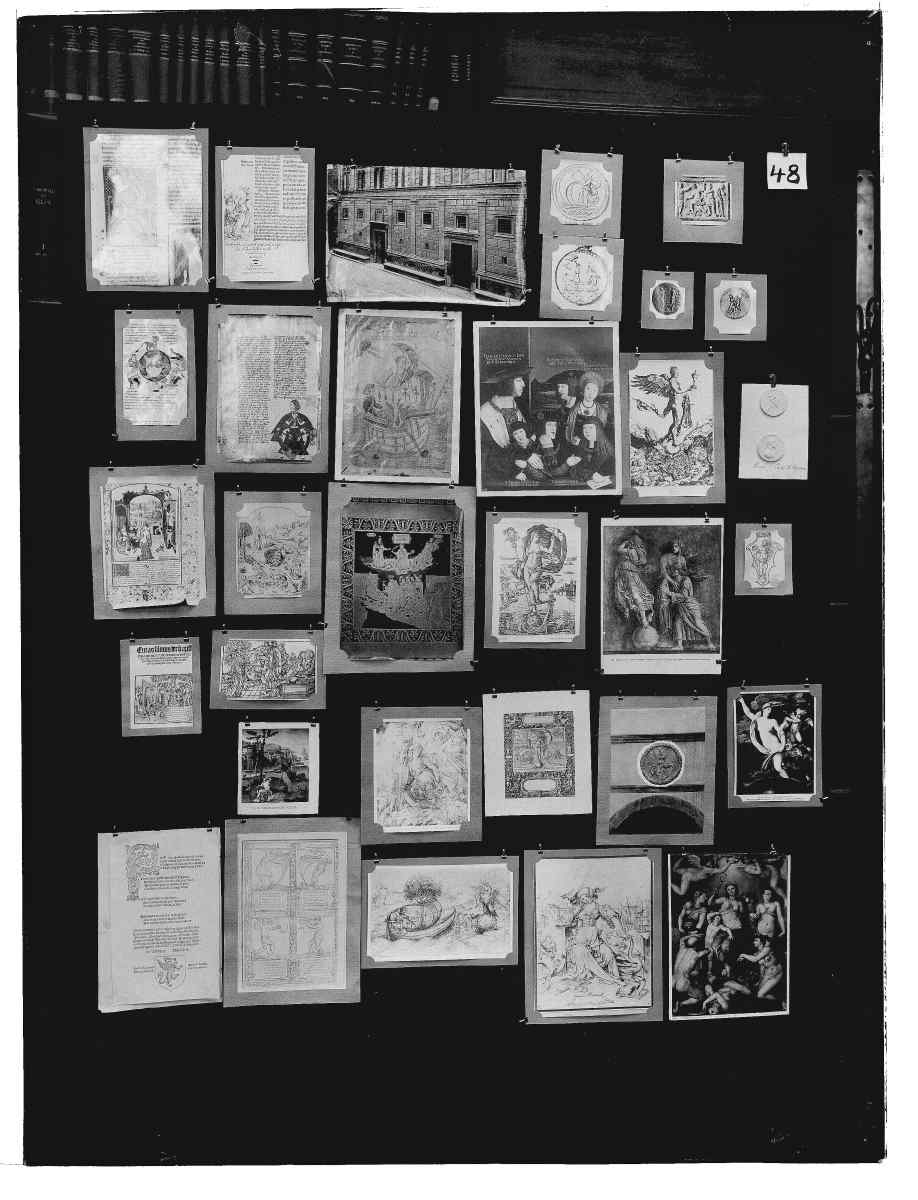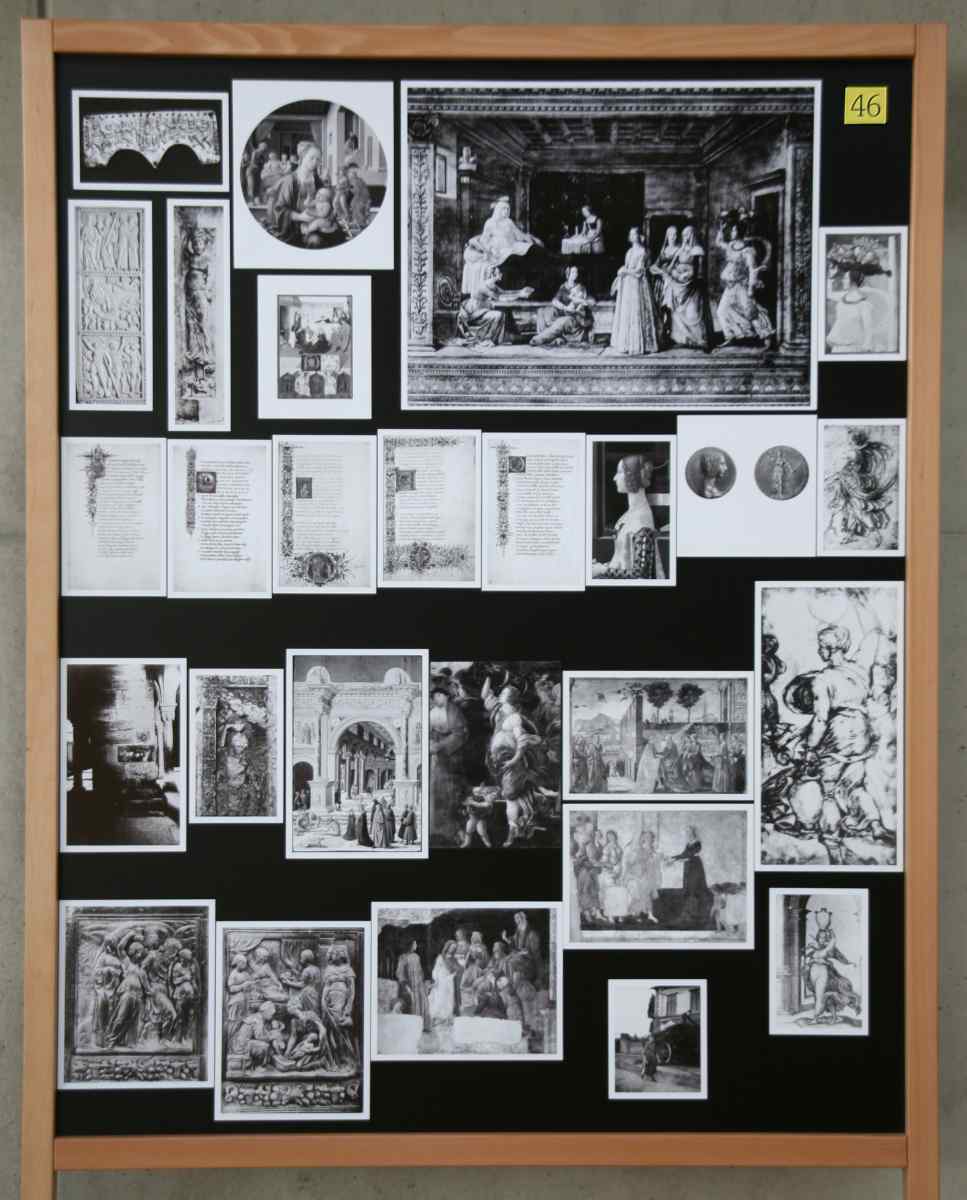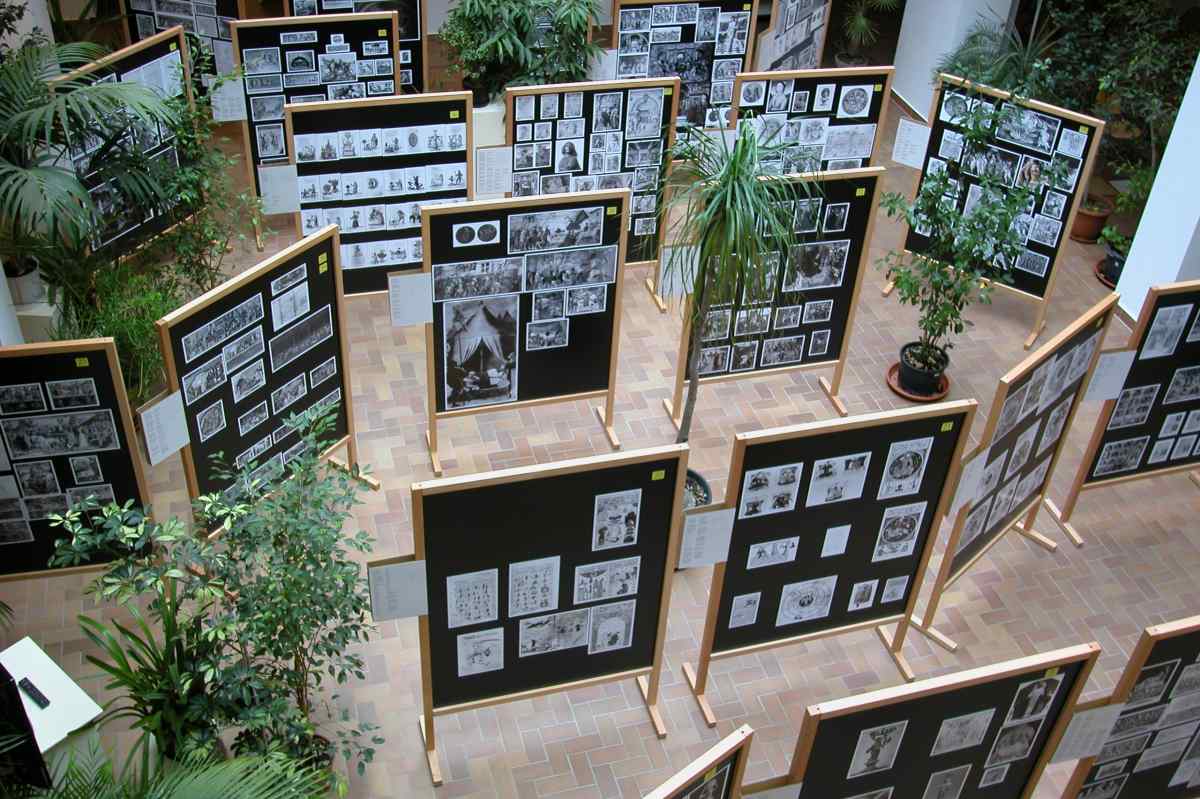Aby Warburg – The Mnemosyne Atlas
An Exhibition of the Albertina, Vienna




Along with Freud, Nietzsche and Max Weber, the German art historian and cultural expert Abraham Moritz Warburg (1866–1929) is regarded as one of the most important pioneers of the humanities in the 19th and early 20th centuries. Aby Warburg—“Jewish by birth, a Hamburger at heart, with the soul of a Florentine” (Warburg’s description of himself)—established iconology as a new method and as a branch of art history in its own right. The library he founded, the “Kulturwissenschaftliche Bibliothek Warburg”, which encompassed some 60,000 volumes at his death, was a gift to scholarship of reference materials that are of timeless value for research on the Italian and German Renaissance.
Warburg’s Mnemosyne Atlas brought together graphical materials from his research and lectures in a series of large-format plates on various topics that demonstrated the legacy of antiquity in the imagery of later epochs, from the Renaissance and the Baroque to the early 20th century.
None of the original plates have survived. The Viennese exhibition organizer, publicist and independent scholar Gerhard Fischer, who presented the work of Aby Warburg in a comprehensive exhibition of the “Transmedialen Gesellschaft daedalus” in Vienna in 1993, gave the entire ensemble of reconstructed plates of the Mnemosyne Atlas to the Albertina. This has made it possible to present anew this key work of one of the most important forerunners of interdisciplinary research.
The Mnemosyne Atlas is the last scholarly work of Aby Warburg. Like all of Warburg’s research, it revolves around the legacy of antiquity in the imagery of the Renaissance.
In the project, begun in 1924, Warburg collected graphical materials from his research and lecturing activities in a series of large-scale plates, each of which was devoted to a particular subject area. He planned to publish the work under the title of Mnemosyne (in Greek mythology the mother of the Muses and the goddess of memory and the art of remembrance). For this inventory of formative influences from the ancient world that are evident in the imagery of the Renaissance, Warburg reached out far beyond conventional research objects of art history at that time. In his Mnemosyne Atlas he included art prints; newspaper clippings; leaflets; posters; stamps; photographs of sculptures, reliefs, frescoes, friezes, carpets and figurines; paintings; drawings; genealogical tables; sketches; illuminated manuscripts; and press photos. All of the graphical materials were reproductions.
In compiling the pictures Warburg attempted to show the development of the forms of expression used by people in different periods of time. The flexible arrangement of the graphical materials on large wooden frames covered with coarse black linen was often changed by Warburg; the varying groupings of the pictures in terms of particular subjects reflected the respective status of his thoughts at different times. The store of materials upon which Warburg drew included approximately 2,000 reproductions. The Atlas itself finally comprised around 1,000 pictures that completely covered the plates.
Warburg, who initially used the plates for demonstration purposes in his lectures, was thus the first scholar to use reproductions as pedagogical aides for exhibitions and lectures.
Warburg’s legendary Atlas was not published during his lifetime; it remained a documented working tool, a "picture laboratory". None of the plates of the Mnemosyne Atlas have been preserved. It is presumed that the originals were lost while Warburg's Kulturwissenschaftliche Bibliothek was being moved to London in 1933.
A photographic documentation made by Warburg served as the basis of the reconstruction. It is on view in the current exhibition.
The present reconstruction was first shown in Vienna in 1993 in an exhibition of the "Transmedialen Gesellschaft daedalus" (concept and organisation: Werner Rappl and Gerhard Fischer) at the Academy of Fine Arts Vienna. Anne and Patrick Poirier and Thomas Kierlinger were in charge of designing the show and Cathrin Pichler and the Minister at that time, Rudolf Scholten, arranged the financial support. Afterwards, the Atlas was exhibited at the Kunsthalle in Hamburg in 1994, at the Messepalast in Vienna in 1996 and later in Siena, Florence, Rome, Tel Aviv and Venice. The originals of the reproductions were identified by Gudrun Swoboda, Wolfram Pichler, Werner Rappl, Andrea Sinnl, Michaela Heintz, Christine Dorner, Marion Deike and Marianne Koos, and provided with captions. In this, it was possible to make use of the preparatory work done by Warburg's assistants Gertrud Bing and Fritz Saxl as well as research carried out by Ernst Gombrich, Dorothée Bauerle-Willert, Peter Huisstede, Martin Warnke and Claudia Brink. The basis for the reconstruction was the original photographic documentation of the original plates made by Warburg in 1929. Gerhard Fischer gave the complete ensemble of reconstructed plates to the Albertina in 2000. Some of the subjects Warburg presented in his Atlas were shown at the Albertina in 1992 as part of the exhibition The Eloquence of the Body. Aby Warburg's importance for the fields of art history and cultural studies is the key reason for showing his main work again in Vienna after an interval of one and a half decades.
(Source: Albertina Museum)